Child Dentistry
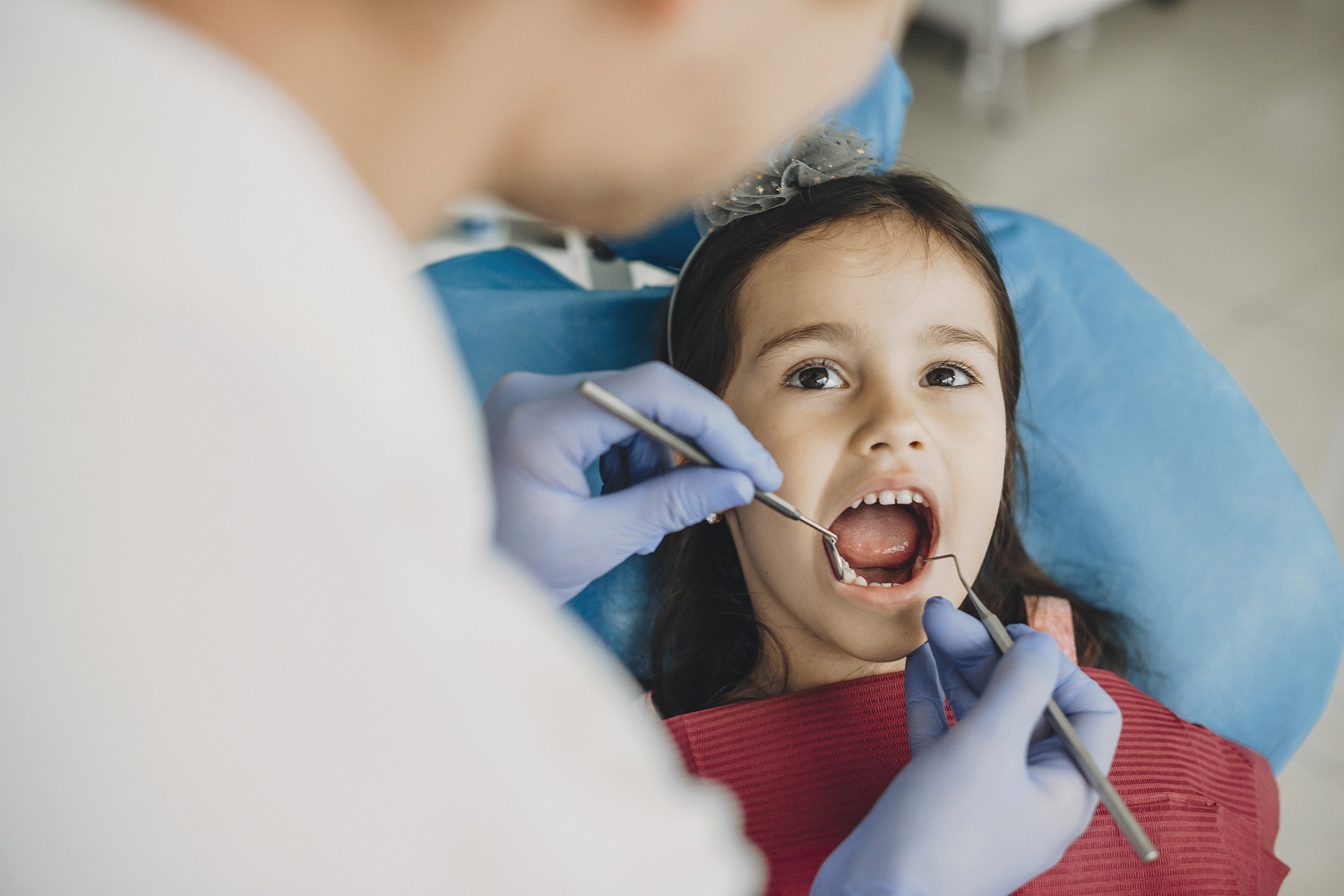
Gentle, Specialized Dental Care for Growing Smiles
At Tooth Buddies, we understand that children require unique, empathetic, and skilled dental care. With over 21 years of experience, our pediatric dental team is committed to building a strong foundation for lifelong oral health. From infants and toddlers to teens, we offer preventive, restorative, and emergency care in a warm, child-friendly environment. Our clinic is equipped with advanced technology and a compassionate team trained in child behavior management and pediatric sedation.
We specialize in managing dental needs for children with special healthcare needs, cleft conditions, and anxiety. Our goal is to ensure that every child has a stress-free and positive dental experience while achieving healthy smiles. We also believe in educating parents, empowering them to support their child’s oral development at home. From the first tooth to the teenage years, Tooth Buddies is your trusted partner in pediatric oral health.
Key Pediatric Dental Services:
1. Restorative Dentistry (Fillings)
We use safe, tooth-colored fillings to treat cavities in children. These restorations are strong, aesthetic, and preserve the natural shape of the tooth. Early treatment of decay helps avoid infections and keeps your child pain-free. Our gentle techniques ensure comfort and encourage cooperative visits.
2. Pulp Therapy (Partial or Complete Root Canals)
When decay or trauma affects the inner nerve of a tooth, pulp therapy saves it from premature loss.
-
Pulpotomy treats just the infected portion.
-
Pulpectomy removes the entire pulp when damage is extensive.
This ensures the baby tooth remains functional until it’s naturally replaced by a permanent one.
3. Space Maintainers
When baby teeth are lost too soon, space maintainers are used to hold the empty space. This prevents nearby teeth from shifting, which can block permanent teeth from erupting correctly. They’re small, comfortable appliances that protect your child’s dental alignment as they grow.
4. Space Regainers
If dental spacing has already been lost due to shifting, space regainers gently move teeth back to recreate proper spacing. This is a proactive step in early orthodontics. It helps guide erupting permanent teeth into the right position, avoiding the need for complex braces later.
5. Trauma Management (Dental and Facial Injuries)
Injuries like knocked-out teeth, fractures, or soft tissue wounds need immediate care. We provide prompt, expert treatment to save teeth, relieve pain, and minimize future complications. Our team is trained to handle pediatric emergencies with calmness and care, reducing your child’s stress.
6. Frenuloplasty for Lip and Tongue Ties
Tight lip or tongue attachments can restrict speech, feeding, or oral hygiene. Frenuloplasty is a minor surgical correction that releases the tie to restore proper mobility. This enhances breastfeeding in infants and improves speech clarity in older children. The procedure is safe and healing is fast.
7. Mucocele Surgeries
Mucoceles are painless, fluid-filled swellings on the lips or inside the cheeks. Though harmless, they can be bothersome or interfere with chewing. We perform simple, quick surgeries to remove them with minimal discomfort. Most children recover within a few days with full relief.
8. Jaw Expanders (Orthopedic Appliances)
Jaw expanders help widen a child’s upper jaw to correct issues like crowding, crossbite, or narrow palate. It’s an early orthodontic treatment that promotes healthy jaw growth and airway improvement. These appliances are custom-made and adjusted gently over time for lasting results.
Frequently Asked Questions
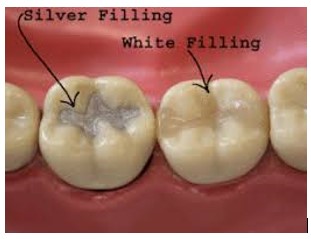
What is restorative dentistry for children?
Restorative dentistry in children focuses on repairing or replacing damaged or missing teeth to restore their function and aesthetics.
Why is restorative dentistry important for children?
It helps maintain oral health, prevent further issues, and improve a child's ability to chew, speak, and feel confident about their smile.
When should my child start seeing a dentist?
Children should see a dentist when their first tooth erupts, or no later than their first birthday.
How often should my child visit the dentist?
Regular checkups every six months are recommended to prevent cavities and other dental problems.
Cavities and Fillings:
What should I do if my child has a cavity?
Schedule a dental appointment so the dentist can evaluate the cavity and discuss treatment options, which may range from preventive measures to fillings.
What are dental fillings, and are there different types?
Fillings replace decayed tooth material. Common types include tooth-colored composites (resin-based) and Glass ionomer cements. Newer materials like Mineral Trioxide aggregate and Biodentin are also used for certain procedures.
Are tooth-colored fillings a good option for children?
Yes, tooth-colored fillings (composites) are often preferred for children as they blend in with the tooth's natural color.
Can cavities in baby teeth be left untreated?
No, treating cavities in baby teeth is crucial to prevent pain, infection, and potential impact on the development of permanent teeth.
What if the same tooth has multiple cavities?
If the cavities are large or on multiple areas on the same tooth, a stainless steel /composite strip crown/ preformed zirconia crown may be recommended by your dentist. Stainless steel crowns are minimally invasive whereas zirconia crowns require a small amount of tooth structure to be removed to fit the crowns as per size.
A previously done filling has broken. What should the next steps be?
An old filling needs to be evaluated clinically and with an x ray. It may be repeated if its simple, or the tooth may need a deeper procedure for further treatment. This is usually followed by a crown to maintain the integrity of the restoration.
- What is a stainless steel crown (SSC)?
A stainless steel crown is a preformed metal cap that is placed over a baby tooth to restore its shape, size, strength, and function after it has been damaged by decay or trauma.
- Why does my child need a stainless steel crown instead of a regular filling?
Fillings work well for small cavities, but if the decay is large or the tooth is fragile, a crown provides better long-term protection. SSCs are more durable and help preserve the tooth until it naturally falls out.
- Is it really necessary to fix baby teeth if they're going to fall out anyway?
Yes. Baby teeth play a crucial role in speech, chewing, and maintaining space for adult teeth. Untreated decay can cause pain, infection, or lead to early loss, affecting alignment of permanent teeth.
- When are stainless steel crowns typically recommended?
- There's extensive decay.
- The tooth has had a baby root canal (pulpotomy).
- The tooth is fractured.
- Fillings are likely to fail.
- Your child has high risk for future cavities.
- Is the procedure painful?
No. The procedure is done under local anesthesia. Your child might feel some pressure, but there should be no pain during the process.
- Will my child be sedated for the procedure?
It depends on your child’s age, anxiety level, and the number of crowns needed. Some children do fine with local anesthesia, while others may benefit from sedation or general anesthesia.
- How long do stainless steel crowns last?
They usually last until the baby tooth naturally falls out, which can be several years. SSCs are very durable and rarely need replacement.
- Will the crown look noticeable in my child's mouth?
Yes, the crown is silver-colored and will be visible, especially on back molars. While it’s not tooth-colored, it’s functional and temporary until the permanent tooth comes in.
- Are there any alternatives to stainless steel crowns?
For front teeth or highly visible areas, tooth-colored (white) crowns may be an option. For molars, however, SSCs are often preferred for their durability and cost-effectiveness.
- Will my child be able to eat normally after getting a crown?
Yes. There might be some mild discomfort for a day or two, but children quickly adapt and can eat normally soon after the procedure.
- Is there any special care needed for the crown?
No special care is needed—just maintain good brushing and flossing habits, and avoid very sticky or hard foods that could dislodge the crown.
- Could the crown fall off?
It’s rare, but possible. If it comes off, keep it and contact our office immediately to have it re-cemented or replaced.
- Will the stainless steel crown affect the eruption of permanent teeth?
No. The crown is placed on a baby tooth and will fall out naturally when the permanent tooth is ready to erupt.
- Is the metal in the crown safe for my child?
Yes. SSCs are made from medical-grade stainless steel and are considered very safe. They have been used in pediatric dentistry for decades.
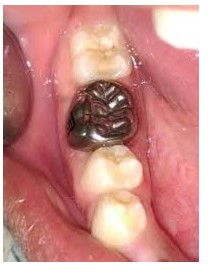
Pulpotomy: A procedure where the infected pulp (nerve) in the crown portion of a baby tooth is removed, leaving the healthy pulp in the roots intact. The space is then filled with a medicated material and sealed with a crown.
Pulpectomy: Also known as a "baby root canal," this involves removing the entire pulp from both the crown and roots of the tooth, followed by cleaning, disinfecting, and filling the canals with a biocompatible material
Is a root canal necessary for baby teeth?
Yes, in certain cases. If a baby tooth is severely decayed or infected, a pulpectomy may be performed to preserve the tooth until it naturally falls out. This helps maintain space for permanent teeth and prevents potential infections .
Will the procedure be painful for my child?
Both pulpotomy and pulpectomy are performed under local anesthesia to ensure your child is comfortable and pain-free during the procedure. After the anesthesia wears off, some mild discomfort may occur, which can be managed with over-the-counter pain relievers prescribed by our doctor.
Is this treatment too much for my child?
Both procedures are standard and safe for children. Dentists use child-friendly techniques and may offer additional sedation options, such as Midazolam drops if needed.
Will my child need general anesthesia or hospitalization?
In most cases, pulpotomy and pulpectomy are performed in the dental office under local anesthesia. However, if your child has severe anxiety, is very young, or has special needs, the dentist may recommend
General anesthesia. This is typically administered in a hospital or specialized dental facility, and hospitalization is usually not required
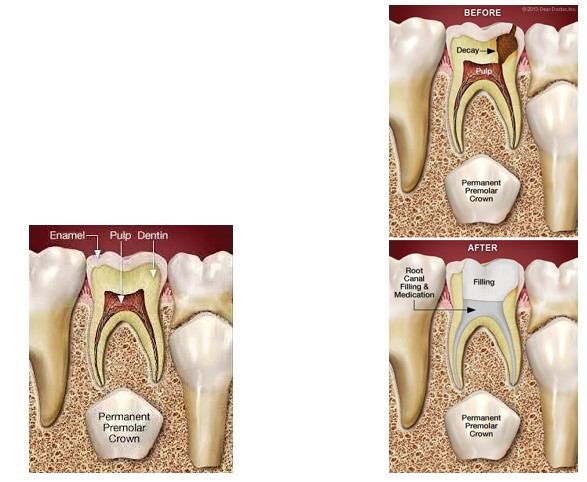
✅ What is a space maintainer?
A space maintainer is a custom-made device that preserves the space left by a missing baby tooth, preventing adjacent teeth from shifting and ensuring proper alignment of permanent teeth.
👶 Why might my child need a space maintainer?
If your child loses a baby tooth prematurely due to decay or injury, a space maintainer helps maintain the If your child has lost a baby tooth prematurely and a space maintainer was not used, there can be several consequences affecting their dental development.
⚠️ Potential Consequences of Not Using a Space Maintainer
- Crowding and Misalignment
Adjacent teeth may drift into the empty space, leading to overcrowding and misalignment of permanent teeth as they emerge. - Impacted Permanent Teeth
Without sufficient space, permanent teeth may become impacted, failing to erupt properly through the gumline. - Bite Problems
Misaligned teeth can result in bite issues such as crossbites or overbites, which may require extensive orthodontic treatment later. - Jaw Discomfort
Improper tooth alignment can place additional stress on the jaw, leading to discomfort and potential jaw problems as your child grows.
Understanding Space Maintainers: What to Expect
Pain and Discomfort
Placement Procedure: The process of placing a space maintainer is typically painless. It involves taking impressions of your child's teeth, which may cause minimal discomfort. The appliance is then custom-made and fitted during a subsequent visit. No needles or drills are involved.
Post-Placement Sensitivity: After the space maintainer is placed, your child might experience mild soreness or a sensation of pressure in the mouth. This is normal and usually subsides within a few days.
⏳ How long will my child need to wear a space maintainer?
The duration varies depending on when the permanent tooth is expected to erupt. Typically, space maintainers are worn until the permanent tooth emerges, which can take several months to a few years.
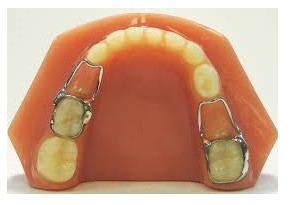
🦷 Why should we treat primary (baby) teeth if they will eventually fall out?
It's a common misconception that primary teeth are less important because they are temporary. In reality, these teeth play a crucial role in your child's overall health and development.
Ensuring Proper Nutrition
Healthy primary teeth are essential for effective chewing, allowing children to consume a balanced diet rich in fruits, vegetables, and other nutritious foods. Untreated cavities can lead to pain and difficulty eating, potentially causing nutritional deficiencies.
Supporting Speech Development
Primary teeth are vital for clear speech. They help children pronounce words correctly and develop proper tongue positioning. Early tooth loss due to decay can lead to speech delays or disorders.
Maintaining Space for Permanent Teeth
Baby teeth act as placeholders for adult teeth. If a primary tooth is lost prematurely, adjacent teeth may shift into the empty space, potentially causing misalignment or crowding of permanent teeth.
Preventing Pain and Infection
Untreated cavities in primary teeth can lead to infections and abscesses, causing significant pain and potential spread of infection to other areas. Such conditions may require more extensive treatments and can affect your child's overall health.
Boosting Self-Confidence
A healthy smile contributes to a child's self-esteem and social interactions. Visible tooth decay or early tooth loss can lead to embarrassment or reluctance to smile, impacting their confidence
🦷 Q: Do you want to avoid cavities or prevent them early?
- Applying fluoride varnish to your child's teeth can significantly reduce the risk of cavities by strengthening enamel and inhibiting bacterial growth, making it a proactive measure in early caries prevention.
- Schedule dental visits every six months to monitor your child's oral health and address any issues early.
🍼3. Avoid Bedtime Bottles Do not put your child to bed with a bottle containing milk, juice, or sweetened liquids, as this can lead to prolonged exposure to sugars and increase the risk of ECC
What is a tongue tie?
A tongue tie, also known as ankyloglossia, occurs when the lingual frenulum, the tissue connecting the bottom of the tongue to the floor of the mouth, is too short, thick, or tight, restricting the tongue's movement.
What are the signs and symptoms of a tongue tie?
Symptoms can vary depending on the age. Infants may have difficulty latching, struggling with breastfeeding or bottle-feeding, and may make clicking sounds while feeding. Older children may have difficulty with speech, licking, and playing wind instruments.
Can tongue ties affect breastfeeding?
Yes, tongue ties can interfere with breastfeeding. Infants may have difficulty latching, creating a painful experience for the mother and hindering the baby's ability to effectively feed.
Can tongue ties cause speech problems?
While tongue ties can contribute to speech difficulties, they are not the only cause. Certain sounds, like "t," "d," "z," "s," "th," "n," and "l," can be affected.
Is treatment necessary for a tongue tie?
If a tongue tie is affecting breastfeeding, speech, or other oral functions, treatment may be recommended.
What are the treatment options for tongue ties?
The most common treatment is a frenectomy, a simple surgical procedure to release the frenulum. Other options include laser assisted tongue tie release. Sometimes, if the tissue is very fibrous, sutures may be necessary.
Is there a risk of scar tissue after a frenectomy?
Yes, there is a risk of scar tissue formation after any wound, including a frenectomy.
Can a tongue tie affect dental health?
Yes, tongue ties can contribute to dental problems like crowded teeth, misalignment, or improper jaw development.
Will a tongue tie be resolved on its own as the child grows?
No. the tongue tie will not “go away” on its own and will need to be surgically removed.
Can a tongue tie be fixed in adults?
Yes, tongue ties can be corrected in adults. Adults who have struggled with speech or dental problems due to a tongue tie can benefit from frenectomy or other release procedures. However, intense functional training in the form of speech and myofunctional therapy will be needed to get the desired level of improvement. Oral health in general will also need to be looked at .
Why are stretches important after a tongue tie release?
Stretches are crucial to prevent the tongue from reattaching or scarring back to its original restricted position. The body naturally heals by shrinking and reattaching tissue, so active stretches help maintain the new, more mobile tongue.
What kind of stretches should I be doing?
Stretches involve gently lifting the tongue, pushing it up and back, and massaging the area where the tongue attaches to the floor of the mouth.
How often should I do stretches?
Stretches should be done multiple times a day (upto 6 times) for the first two weeks after the procedure . Consistent stretching is key for maintaining the new mobility.
How long should each stretching session last?
Each stretching session should be relatively short, lasting around 5-10 seconds per stretch. The goal is to encourage the tissue to stay open and prevent it from reattaching.
What if my baby or child resists the stretches?
Start gently and build up the pressure gradually. You can also try to distract your child with toys or other activities during the stretching session.
Can I cause any harm to my baby by stretching them too hard?
Yes, it's important to avoid forcing the stretch and causing pain or discomfort. Start with gentle pressure and gradually increase it as your child becomes more comfortable.
How long do I need to do stretches for?
Stretches are usually recommended for a few weeks after the release, or as directed by your healthcare provider. It's important to follow up with your provider to ensure the tongue is healing properly and maintain its mobility.
What if I miss a stretching session?
If you miss a stretching session, it's okay to catch up when you can. Consistency is important, but a few missed stretches won't necessarily undo all the progress you've made.
What other exercises or activities can I do to support tongue mobility?
Besides stretches, you can also try lip or tongue massages, lip licks, and encouraging your child to practice tongue movements like sticking out their tongue or making "tongue clicks".
What signs indicate I should seek further advice from my healthcare provider?
If you notice any signs of reattachment (like the tongue getting shorter or thicker), if your child experiences significant pain or discomfort, or if you have any concerns, consult with your healthcare provider.
Before-
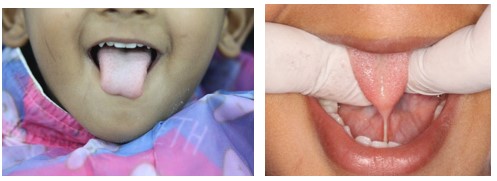
After-
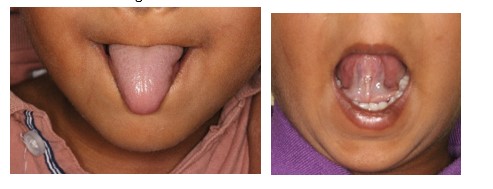
What is a mucocele, and why might I need to have it removed?
A mucocele is a small, fluid-filled cyst that forms in the oral cavity, often on the lip or tongue, due to trauma or obstruction of a salivary gland. They are usually harmless and can resolve on their own, but if they become large, painful, or cause issues with speech or swallowing, removal may be recommended.
What are the different methods for removing a mucocele?
There are several methods, including surgical excision (cutting out the cyst), laser ablation, cryotherapy (freezing), and marsupialization (unroofing the cyst to allow drainage).
How does surgical excision work, and what's the recovery process like?
Surgical excision involves removing the cyst and the surrounding tissue, including the affected salivary gland. The recovery process typically involves a liquid or soft diet for a few days and avoiding strenuous activity for a period of time, depending on the size and location of the mucocele.
Is laser treatment a good alternative to surgery, and what are the advantages?
Laser treatment, particularly diode laser ablation, can be a good alternative, especially for smaller or less complex mucoceles. It offers the advantage of minimal bleeding, scarring, and postoperative discomfort compared to traditional surgery.
What are the potential risks or complications of mucocele removal?
Complications are generally rare, but potential risks can include bleeding, infection, temporary nerve damage, or recurrence of the mucocele. It's important to discuss these risks with your dentist or oral surgeon before making a decision about treatment.
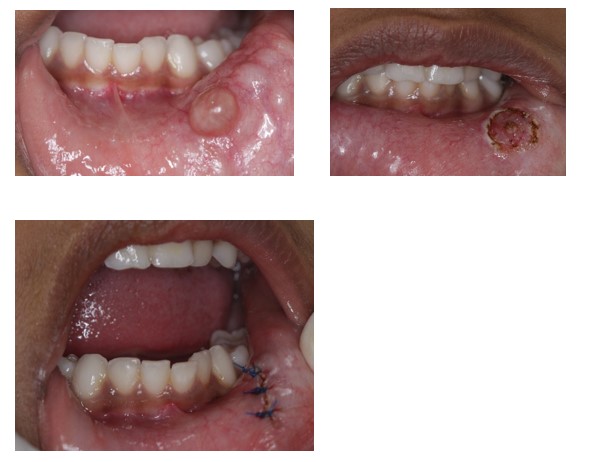
What is a palatal expander and why is it used for milk teeth?
A palatal expander is a device that gently widens the upper jaw (maxilla) to create more space for teeth, particularly when there isn't enough room for the permanent teeth to erupt properly. It's often used in children with milk teeth because their jawbones are still developing and more malleable, making expansion easier and more effective.
How does a palatal expander work?
The expander is typically attached to the back teeth (molars) of the upper jaw. It has a screw-like mechanism that is adjusted regularly, usually by the orthodontist, to gradually widen the jaw. This widening action creates space for the teeth to erupt in their correct positions, or for impacted teeth to find their way out.
What are some common reasons for needing a palatal expander?
Palatal expanders are often recommended for:
- Crowding: To create space for teeth that are predicted to be crowded when permanent teeth erupt.
- Crossbite: To correct a crossbite, where the upper teeth bite inside the lower teeth instead of outside.
- Impacted teeth: To help blocked teeth find their way into the correct position.
How long does a palatal expander treatment take?
The active phase of expansion (when the screw is being adjusted) usually takes a few weeks. The device may then remain in place for several more months to allow the jawbone to fully stabilize after the expansion.
Are there any side effects or concerns with using a palatal expander?
Some temporary side effects can include discomfort, mild pain, and a gap between the front teeth. It's important to follow hygiene instructions to prevent food from getting stuck and to maintain good oral health while wearing the device.
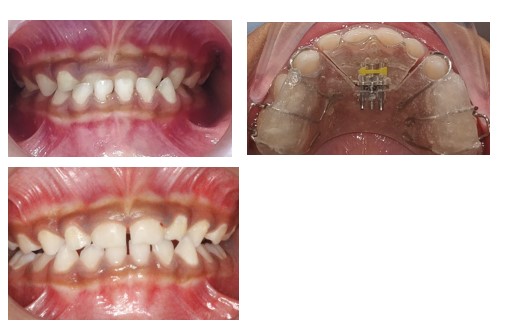
Pit and fissure sealants are protective coverings placed on the chewing surfaces of teeth to prevent cavities, particularly in children's permanent molars. They act as a barrier, shielding the grooves and pits where plaque and bacteria can accumulate.
Here are some frequently asked questions about pit and fissure sealants:
What are pit and fissure sealants?
- Pit and fissure sealants are thin, protective coatings applied to the chewing surfaces of teeth.
- They cover the pits and fissures (the small grooves and depressions) on the tooth's surface, which are prone to decay.
- Sealants create a smooth, barrier that makes it harder for plaque and bacteria to adhere and cause cavities.
Who needs pit and fissure sealants?
- They are commonly recommended for children's permanent molars as a preventive measure, but can also benefit adults, especially those at high risk of cavities.
- Sealants are particularly beneficial for children and adults with a history of tooth decay, a lack of fluoride in their drinking water, or those with certain medical conditions.
How are pit and fissure sealants applied?
- The application is a quick, painless procedure.
- The dentist cleans and dries the tooth, applies a mild etching solution to roughen the surface, and then paints the sealant material onto the pits and fissures.
- The sealant is then cured with a special light to harden it.
How long do pit and fissure sealants last?
- Sealants can typically last for several years with proper care.
- It's important to have them checked at regular dental appointments to ensure they are still intact and to have them repaired or replaced if necessary.
Are pit and fissure sealants safe?
- Sealants are generally safe and have no known risks.
- They are a simple and effective way to reduce tooth decay and avoid more extensive dental work.
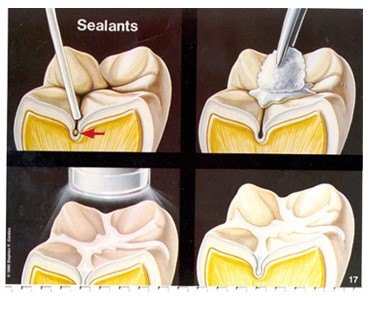
Beyond the Smile...Your health starts here.
Tooth Buddies delivers quality dentistry with a personalized touch. Each patient is treated with the utmost care, compassion, empathy.
